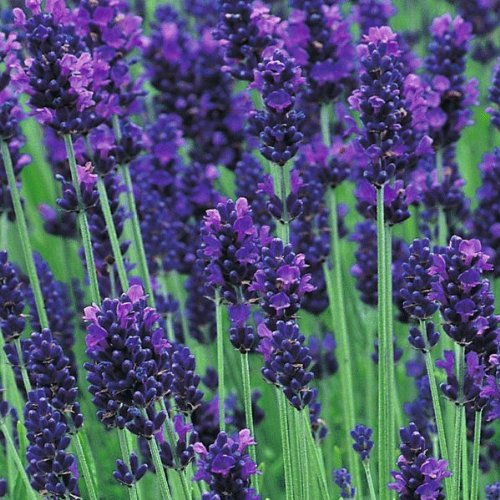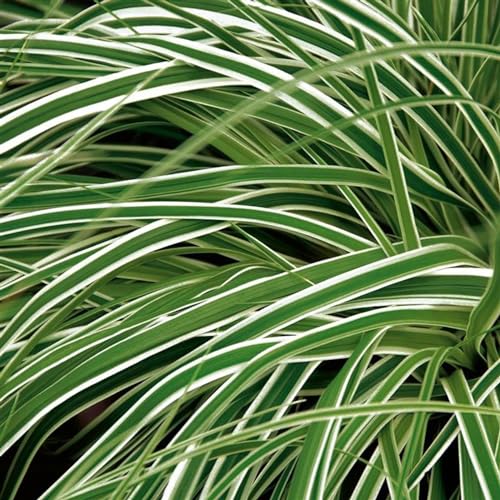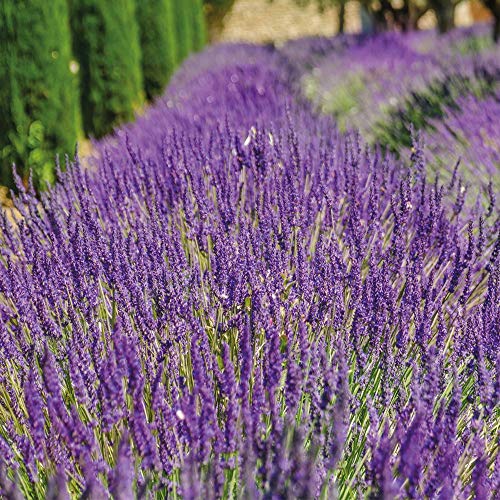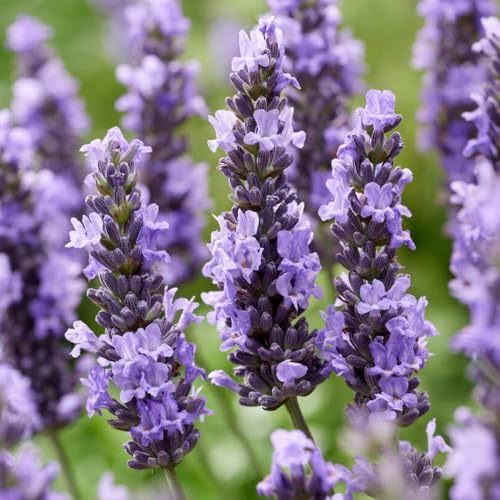It Will Fill Your Garden With Beautiful Scents — 10 Ways to Landscape With Lavender That Make This Mediterranean Shrub Look Its Best
Discover the many different ways you can use this attractive, pollinator-friendly perennial in your landscape
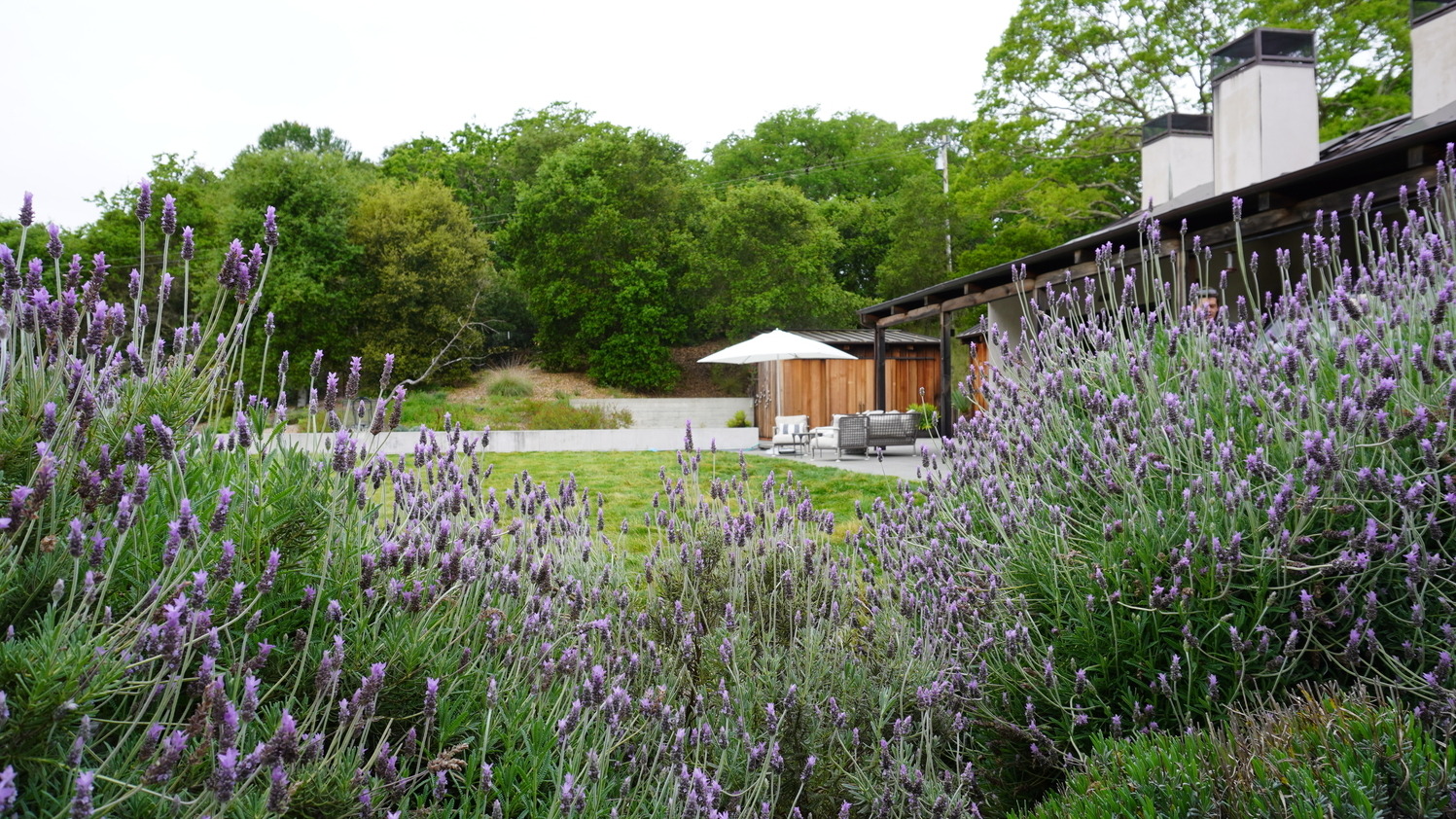
Love the idea of landscaping with lavender in your garden, but unsure exactly what to do with it? Or even whether this sun-loving shrub will grow successfully in your region?
We have you covered with these landscaping ideas from gardening experts, who can advise on the conditions that the various lavender varieties require. Along with a host of ideas for growing it in your garden, from wild, natural styles to neater alternatives.
Whatever the size of your outdoor space and weather conditions in your region, there is an option for you to consider, according to these gardening experts.
There are various types of lavender, but those you will see most frequently are English, French, and Spanish lavender, along with their respective hybrids. English lavender and its cultivars are hardy, while French and Spanish lavenders are tender, so the latter are unlikely to survive a cold, wet winter and are best planted in pots if you live in a temperate zone.
"Lavender is a highly desirable plant, yet it is often misunderstood by gardeners," says Matt Mattus, senior director of Horticulture at the American Horticultural Society. "It may be helpful to know that lavender is botanically classified as a Mediterranean shrub, but it can also be considered a semi-tender Mediterranean perennial that is often short-lived.
"There are a number of species and types of lavender, and identifying the differences between French lavender and Spanish lavender can be challenging for new gardeners. Although, most plants with silver-gray or fuzzy foliage provide a clue to their origin, and with lavender, this knowledge helps us understand its needs as well."
1. In a Rock or Gravel Garden
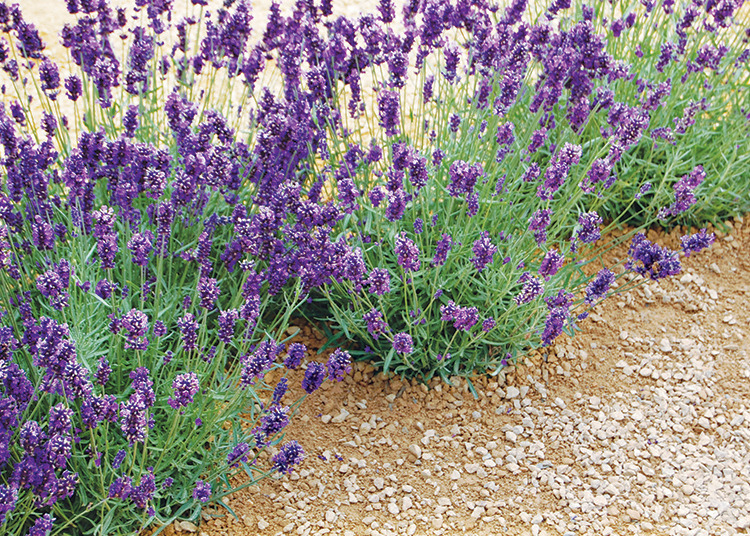
Plant lavender in sandy soil for best results.
Lavender, irrespective of type, loves the sun and dislikes soggy soil. For this reason, it's a great plant for a rock garden or gravel landscape, where lavender will grow happily alongside other Mediterranean plants, such as Phlomis, in chalky, gravelly, or sandy soil. Although drought-tolerant, lavender will require watering for the first season after planting.
The Livingetc newsletters are your inside source for what’s shaping interiors now - and what’s next. Discover trend forecasts, smart style ideas, and curated shopping inspiration that brings design to life. Subscribe today and stay ahead of the curve.
"A good place to try lavender is on a sunny, well-draining slope with a rock or gravel mulch, rather than wood bark, and water only by hand or hose," says Matt. "Full sun is essential, and a southern exposure will help the plants survive winter if the ground freezes in your area.
"Given all the challenges that lavender can bring, there is nothing wrong with treating plants as annuals if your climate is too harsh and wet in winter. I can’t grow lavender unless I bring the plants into the greenhouse for the winter, yet I have one plant at the end of my driveway that has thrived for ten years.
"It’s pretty well known that the hardiest lavender at the moment is a cultivar named Phenomenal, at least for the Northeast, but even in New England, lavender is never a sure bet."

Matt Mattus has been involved with horticulture since he was a child, working in his parents’ garden, and by age 12, he was entering the local horticultural society competitions. After a creative career in design, several books on gardening, and active membership in many plant societies, today Matt sits as the senior director of Horticulture for the American Horticultural Society (AHS) in Washington, DC-and gardens in Massachusetts.
2. Along a Pathway
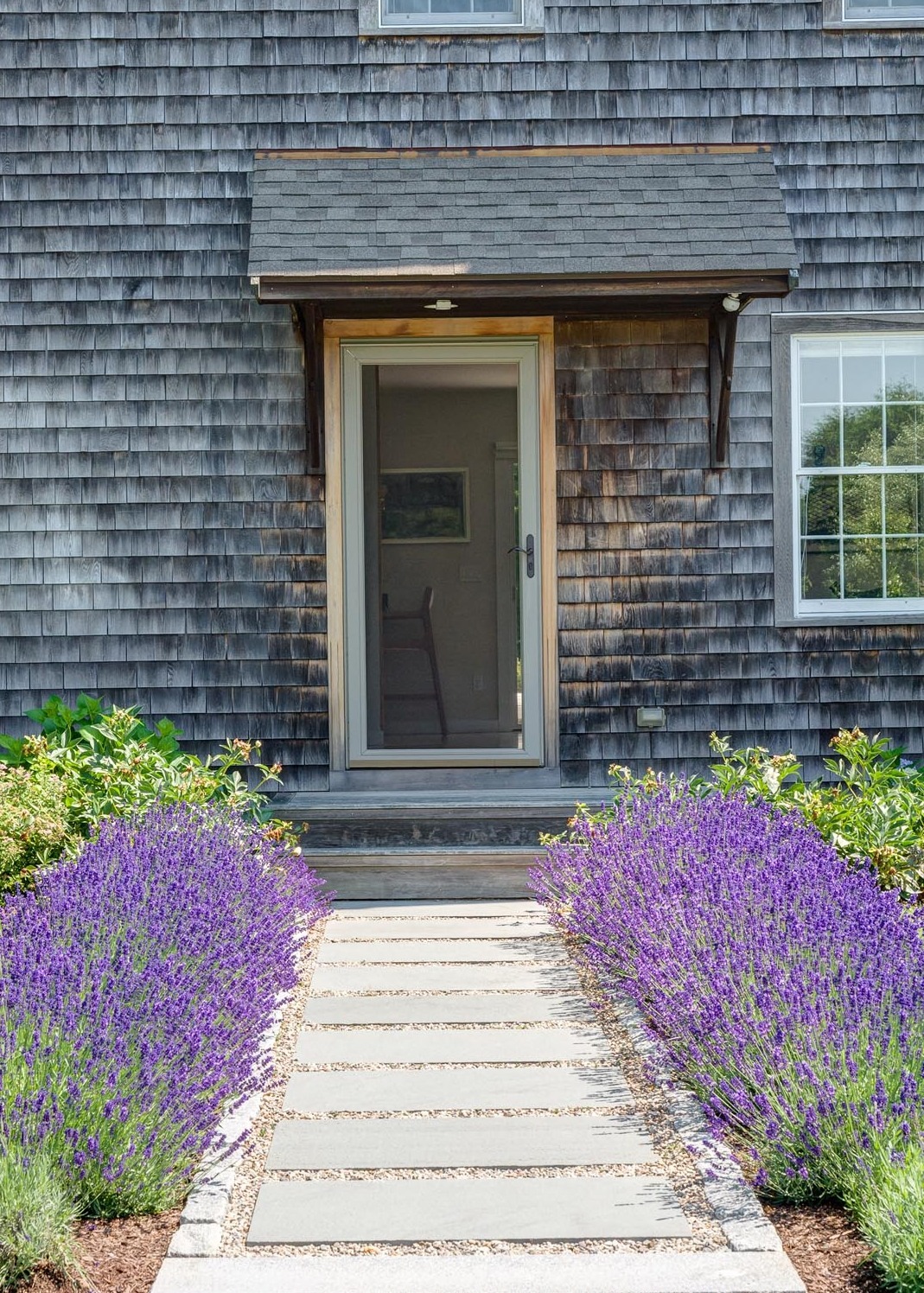
Lavender provides color and scent along the pathway in this scheme by Nilsen Landscape Design.
Lining a garden path with lavender not only looks pretty, it's one of the best ways to enjoy the plant's scent, which is emitted as you brush past the flowers. A much-loved plant in aromatherapy, lavender is renowned for its calming properties and ability to reduce stress, anxiety, and depression. These benefits can also be felt from the fragrant flowers, but you'll need to ensure they have enough sun to flourish.
"If you live in a colder climate, consider planting lavender along a stone or concrete walkway that may warm up during the winter," says Matt. "If planting lavender in the garden, it thrives best when planted alone, with no other plants nearby, or alongside other lavender plants.
"Sandy, gravelly, and well-draining soil will also promote healthy growth. A gravel or stone mulch may help keep the soil warm in winter and maintain dry foliage. Avoid drip irrigation or automatic watering systems, as lavender should not be watered on a schedule. After blooming, cut flower stems off at the base, and prune plants back by one-third to two-thirds annually to stimulate new growth.
"Plant lavender with abundance when looking for that perfect plant to line paths and walkways, especially up to the front door," says Byron Thomas, Head of Horticulture at Petersham Nurseries. "There is nothing like coming home from a busy day and brushing past those silvery leaves to activate the scent to signal it's time to relax, and you have reached your destination."
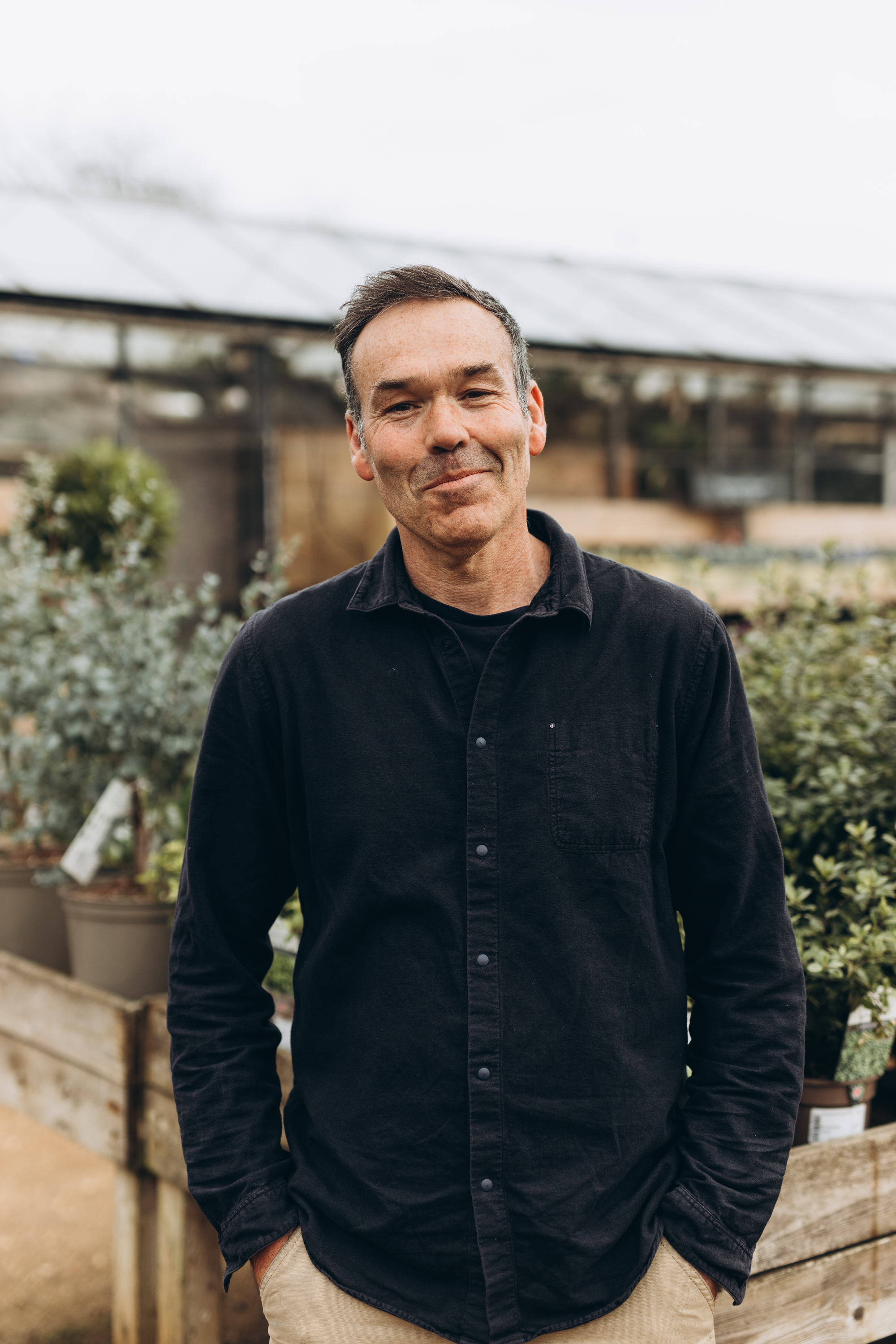
Byron Thomas is the head of Horticulture at Petersham Nurseries in Richmond. Originally a landscape designer and plantsman, he is a graduate of the English Gardening School in Chelsea and Liverpool University. With over 20 years' experience in landscape design and project management, he has earned a reputation for delivering beautiful, bespoke gardens that are reflective of their time and space.
3. As a Filler in Flower Beds
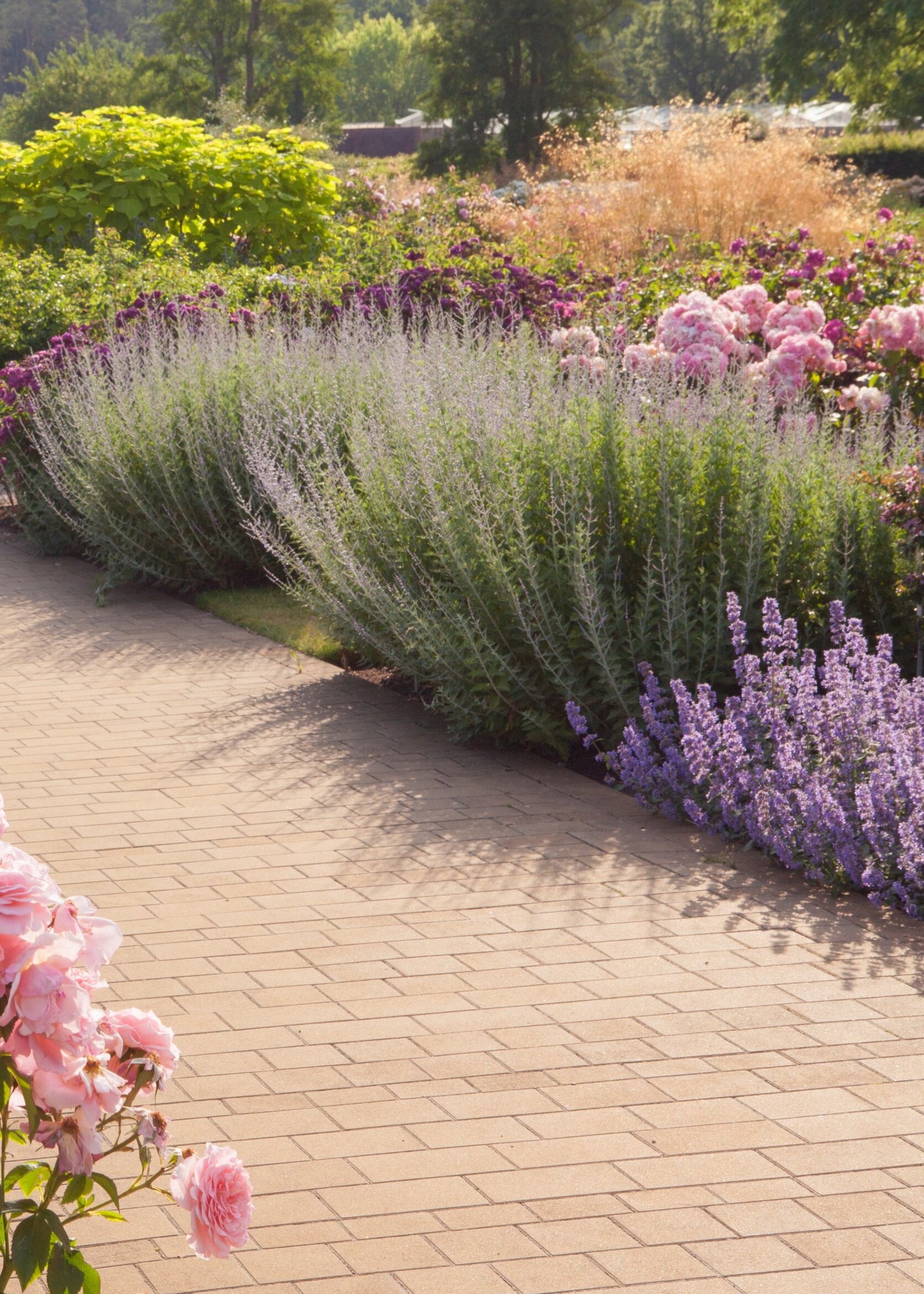
Knowing the correct lavender companion plants will ensure your design not only looks great, but that it will thrive, too.
Although beautiful in its own right, lavender makes a wonderful filler plant in flower beds to offset taller or showier perennials. When planting your lavender, consider whether you would like to team it with flowers in bold color contrasts or with those in complementary shades, such as alliums or roses.
"As a relatively drought-tolerant plant, lavender is perfect for beds and borders in the modern garden, with its low maintenance credentials adding another string to its bow," says Byron. "Lavender's rich purple spikes cut a gentle swathe through the garden, and its gray-ish green foliage provides a foil against which to show off the perennial stars of the summer border.
"Maintenance is also pretty simple, remove flower heads once spent, as this can promote longer flowering time. Annually prune back to roughly a third to half its size in spring after the last frosts, remembering that it's important to make the cuts just above the new leaf growth rather than cutting into the woody base to ensure an abundant plant for years to come."
4. In a Pollinator Garden
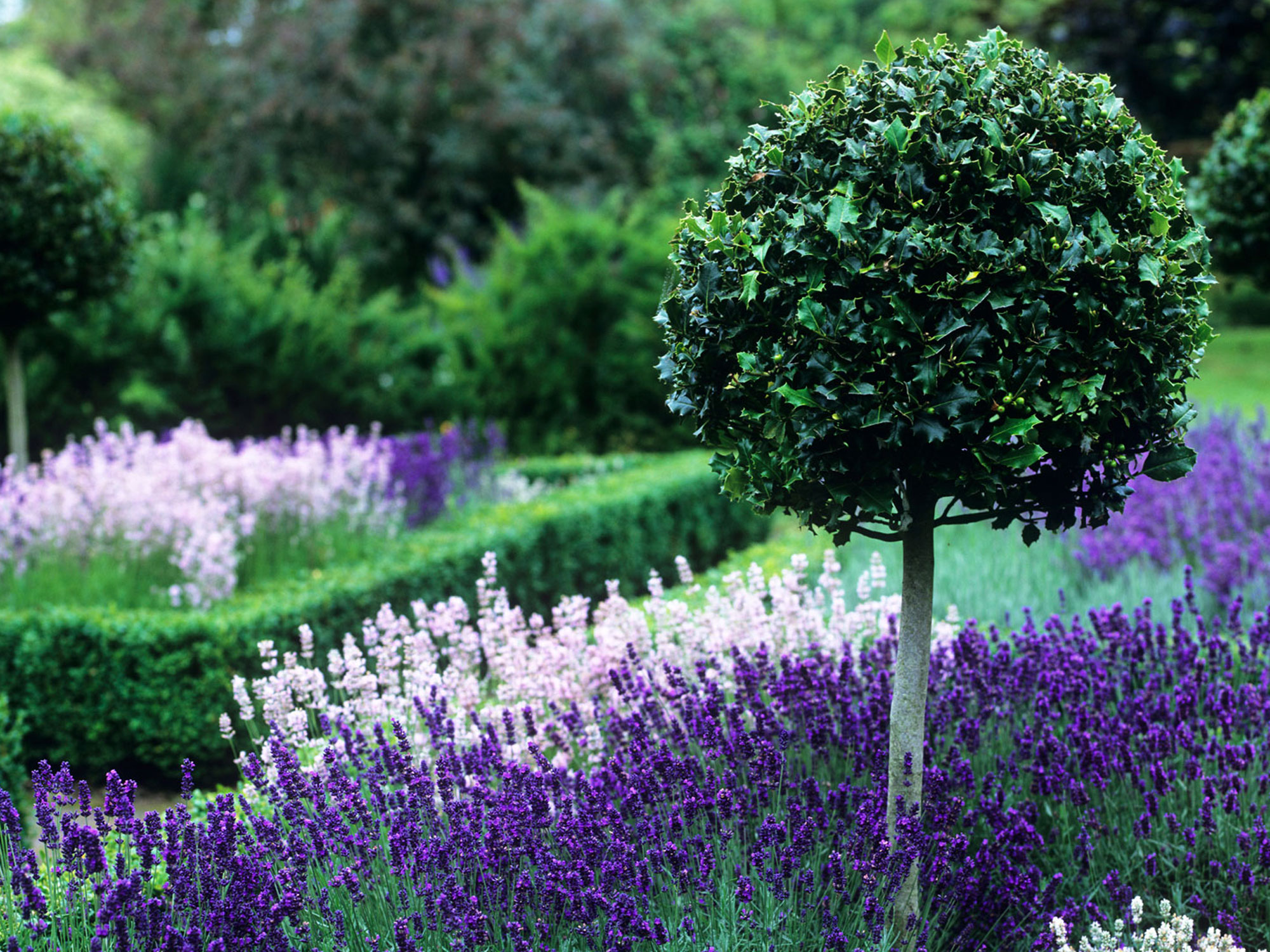
Provide a pollinator banquet with swathes of lavender.
With pollinator populations declining at an alarming rate, many gardeners are starting butterfly gardens filled with plants for Monarchs, Skippers, Swallowtails, and other butterfly species to feed on and lay their larvae. As well as being beneficial for some of these butterflies, lavender is also one of the best flowers for bees. Plant it alongside other beneficial plants for pollinators, such as Milkweed and Salvia, or whatever is native to your region.
"Lavender is a magnet for bees and butterflies, making it a fantastic companion in pollinator gardens," says Kat Aul Cervoni, landscape gardener and founder of Staghorn Living. "I love to pair it with echinacea, salvia, yarrow, or rudbeckia for a drought-tolerant, low-maintenance combo. Just make sure you have well-draining soil and full sun."
"My lavender is alive with the sound of bees every summer, so I take pride in knowing I am supporting our pollinators," says Byron. "A personal favourite is Lavender angustifolia ‘Hidcote' as it has the deepest purple blue flowers. It thrives in full sun on well-drained soil."
5. For Underplanting
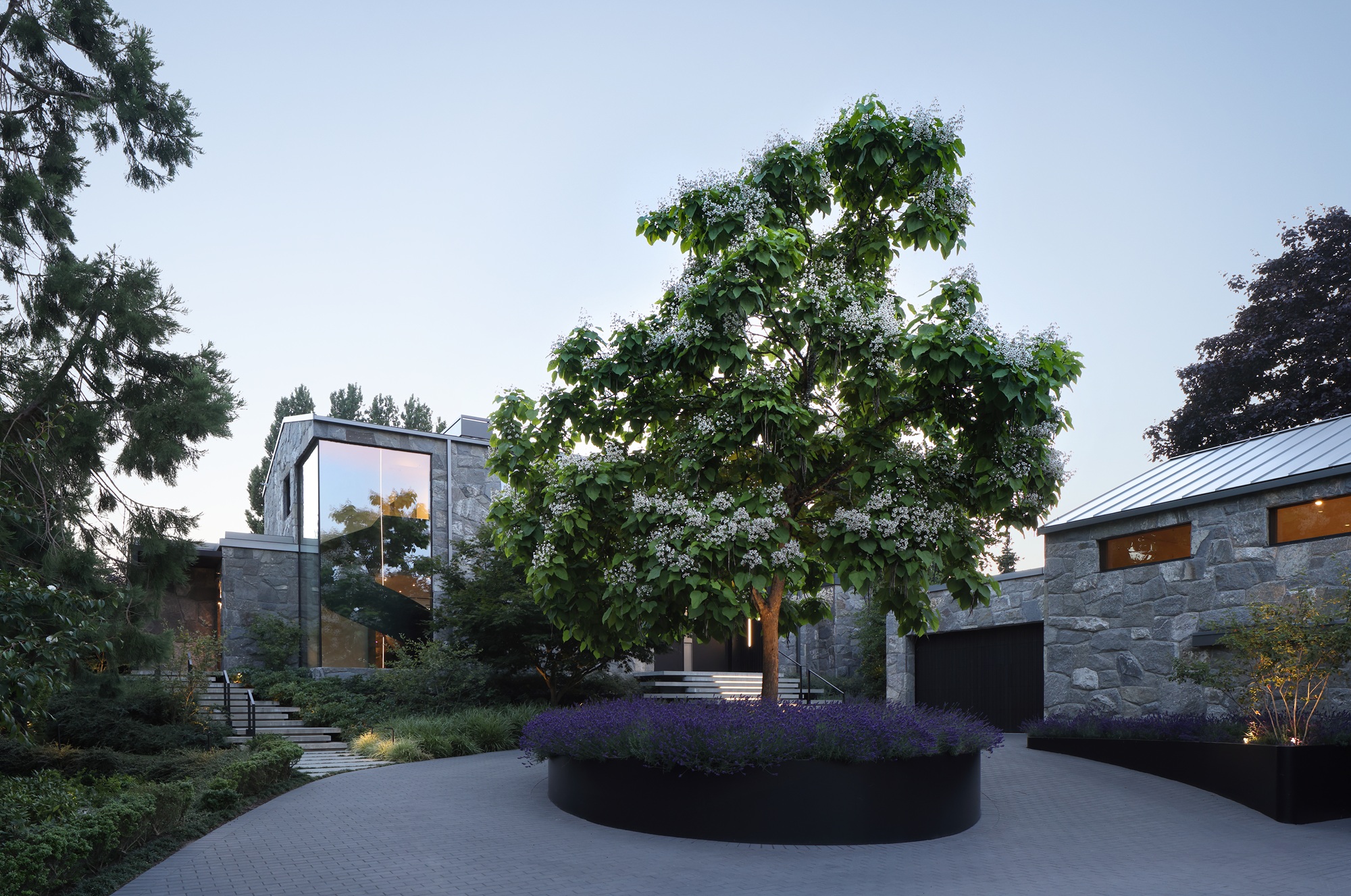
Lavender deters aphids with its powerful scent.
Although lavender is one of the best plants for full sun, it can be used for underplanting too, although ideally in hot spots of the garden. As long as it has the necessary conditions (sunshine and well-draining soil), it will thrive. Plant it with other sun-loving species for best results.
"Underplanting is also part of lavender's all-round appeal," says Byron. "It makes a perfect companion to roses as part of the classic English garden look and can be used to deter aphids with its powerful scent, as well as suppressing weeds and generally adding another loose layer and texture to the landscape.
"For a different vibe, they make excellent underplanting for olive trees and complement their silver foliage whilst adding that hit of color and movement at the base."
6. With Ornamental Grasses and Evergreens
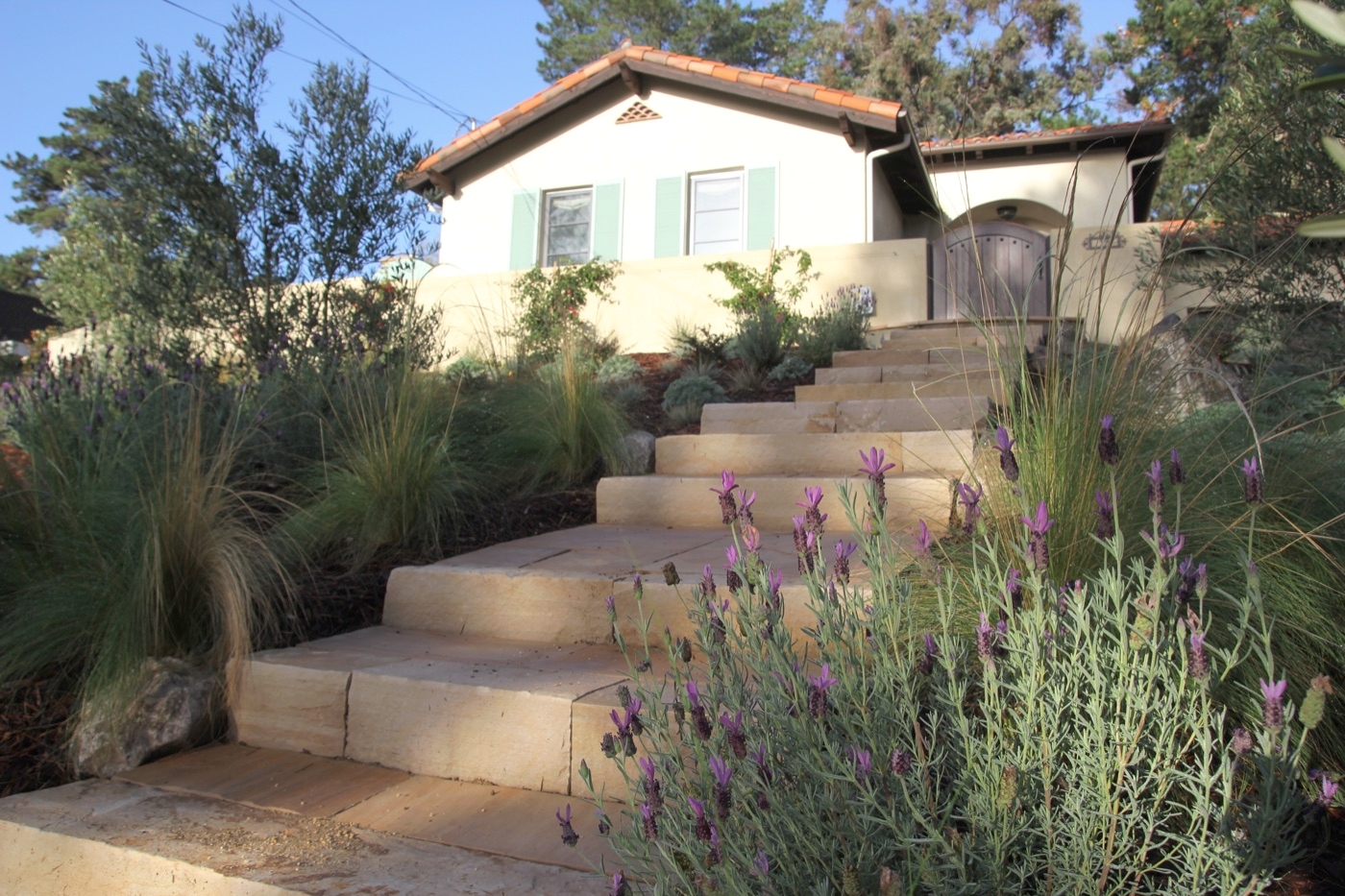
Lavender's subtle tones work well with grasses and evergreens.
If big, blousy florals aren't your style, plant lavender with ornamental grasses and evergreens for a cleaner, modern look. Lavender's long flower spikes offer up a splash of color amongst the greenery without being showy. Cultivars are available in blue, pink, or white, as well as purple if you want to mix things up.
"Lavandula ‘Hidcote’ is my favourite with its dark purple flowers on a compact plant. Although L. ‘Vera’ comes a close second and is lighter in color," says garden designer Kate Gould, founder of Kate Gould Gardens. "Both work well with other plants that like dry sunny conditions and ornamental grasses. Salvia, Agapanthus, Erigeron, as well as evergreens such as small Pines and architectural Yucca would all make good companions."
"Lavender in flower is beautiful, but it is a plant that likes a specific environment. Give it even a glance at the shade or wet soil and you will be looking at an ‘ex Lavender’."

Kate Gould Gardens began in 1998, and now, 27 years and five Chelsea gold medals later, Kate is one of the most sought-after garden designers in London. Alongside her talented team, you’ll still find her with her hands in the dirt, installing the latest exquisite planting scheme she has dreamt up.
7. In a Sensory Garden
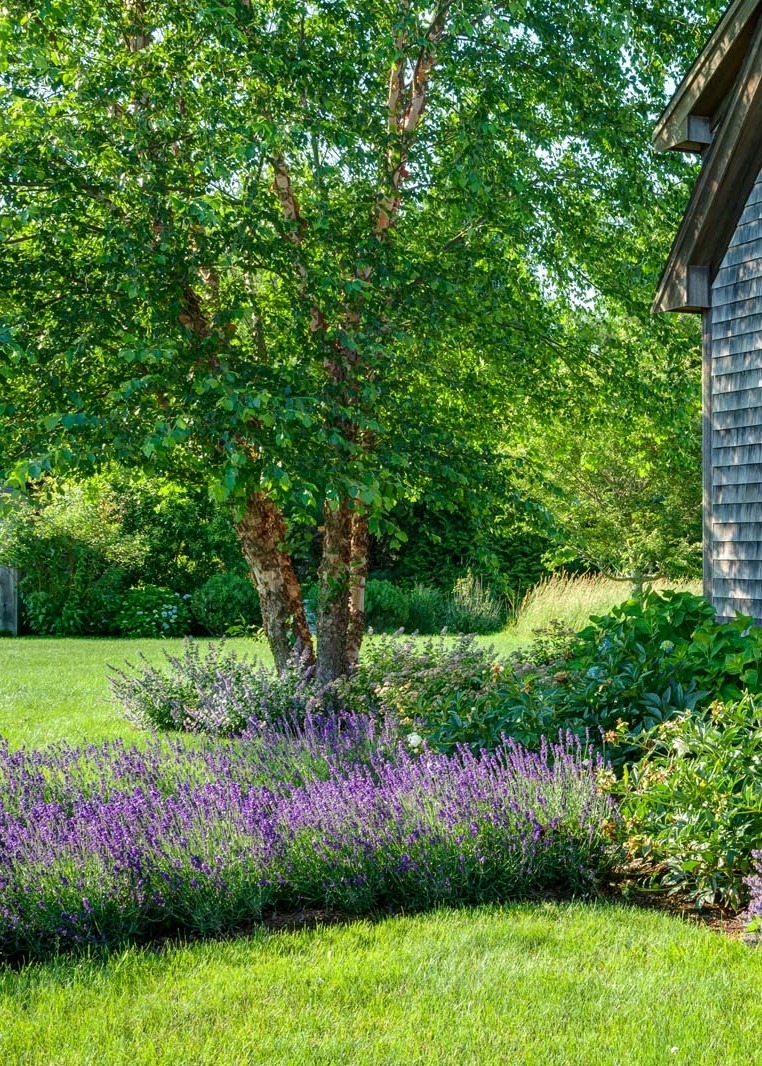
Lavender adds a sensory element in this scheme by Nilsen Landscape Design.
With stress a major part of modern life, what could be better than coming home to a sensory garden, designed to soothe the mind, body, and soul? Creating one doesn't have to be complicated or difficult, either. Just include fragrant, pollinator-friendly plants, such as lavender, which appeal to multiple senses.
The fact that lavender will attract birds, butterflies, and bees is beneficial for them and a sensory bonus for you with the chirruping and other subtle sounds they bring.
"Planted en masse on the edge of gravel or at the top of a sunny wall where it can bake, and lavender will reward you with pillowy mounds of purple blooms and scent in the summer," says Kate. "Make sure to prune the old flowers away in late summer after they have faded to keep the plants compact and neat; otherwise, they will get wild and rangy."
8. Around the Patio in a Minimalist Garden
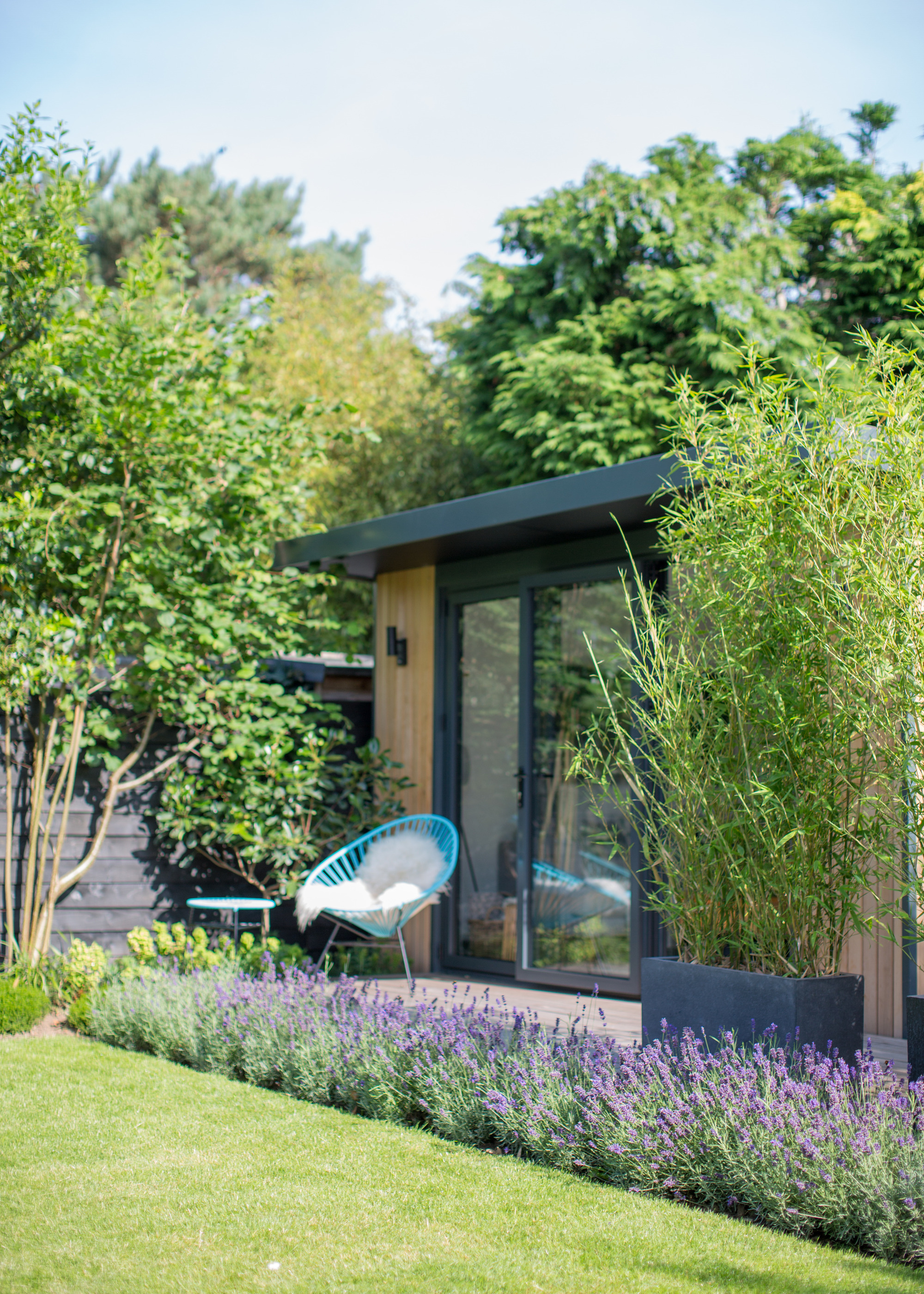
Line your patio edge with lavender for color and scent for a minimalist garden look.
Sun-loving lavender is a perfect shrub to plant when you want to create a relaxed vacation feel.
"For an easy breezy, modern minimalist look, I love using a simple planting palette of ornamental grasses, boxwood, and lavender," says Kat. "This combination emphasizes movement and texture and has a restful, peaceful vibe — perfect for bordering a sunny patio or pool area.
"My favorite types of lavender for these gardens are 'Phenomenal', 'Hidcote', and 'Munstead', as they are more tolerant of cold and humidity (which are things we have to deal with in our climate in the Northeast)."

Landscape designer, Katherine "Kat" Aul Cervoni is the founder and principal of Staghorn Living. Kat creates outdoor spaces that become natural extensions of a home’s interior. A member of the Ecological Landscape Alliance and the Association of Professional Landscape Designers, she also mentors young plant enthusiasts and upcoming designers.
9. In a Container Garden
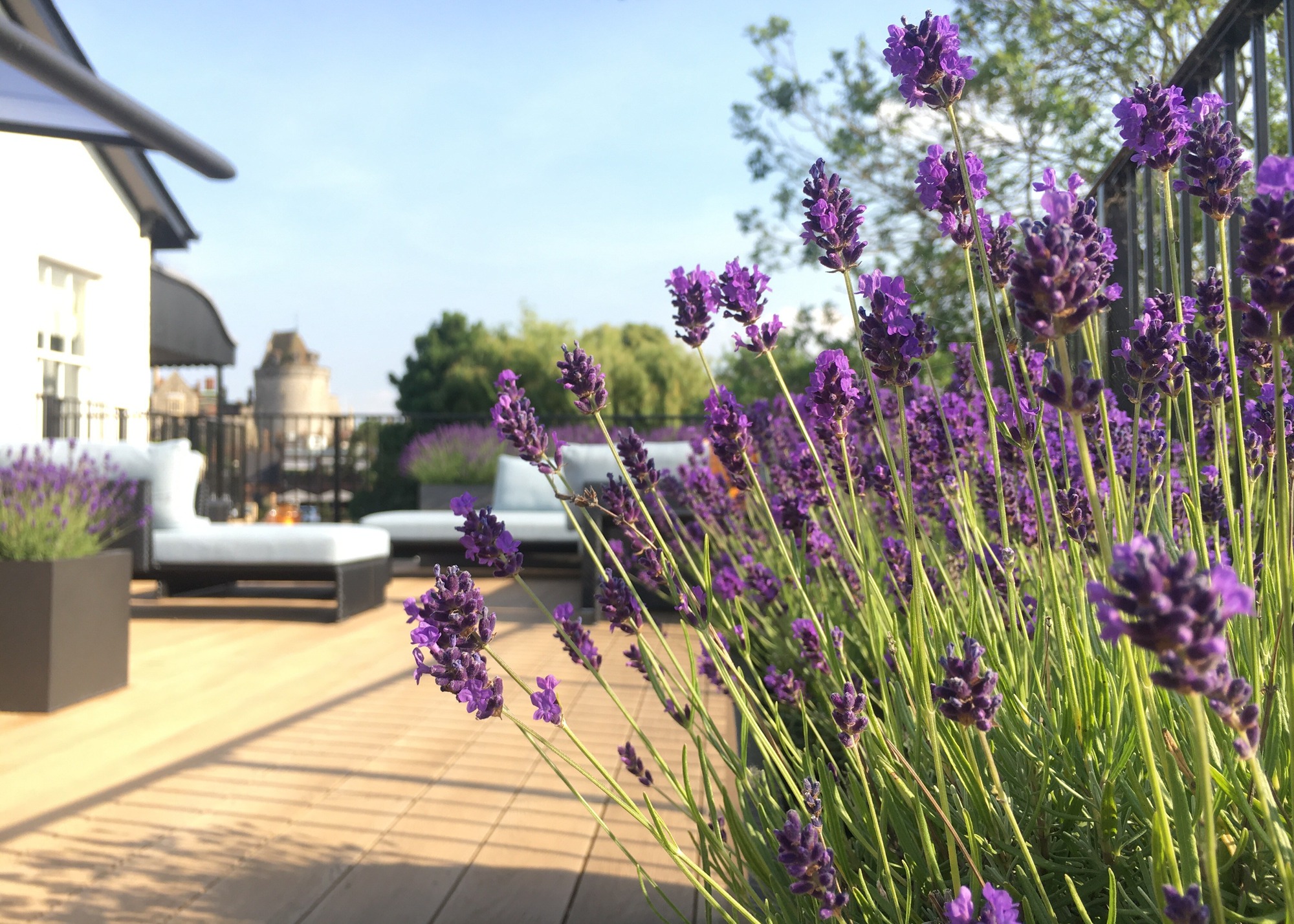
Lavender is the perfect plant for container gardening.
If you don't have a sunny garden, it may be better to plant fragrant flowers for shade in your beds, and grow lavender in pots on a warmer part of your patio. The added benefit is that you can move the pots, if you need to, as the sun gets higher or lower at different times of the year.
"When someone is short on space, has questionable soil, or only has full sun in one tiny spot, I love using lavender in containers," says Kat. "This allows you to create its preferred mix of fertile yet well-draining soil and keep it isolated from damper conditions.
"I like to use lavender 'Sensational' in containers since it's more dense and compact but still has the cold and humidity tolerance that works well in our climate."
10. Enhance the Surrounding Landscape
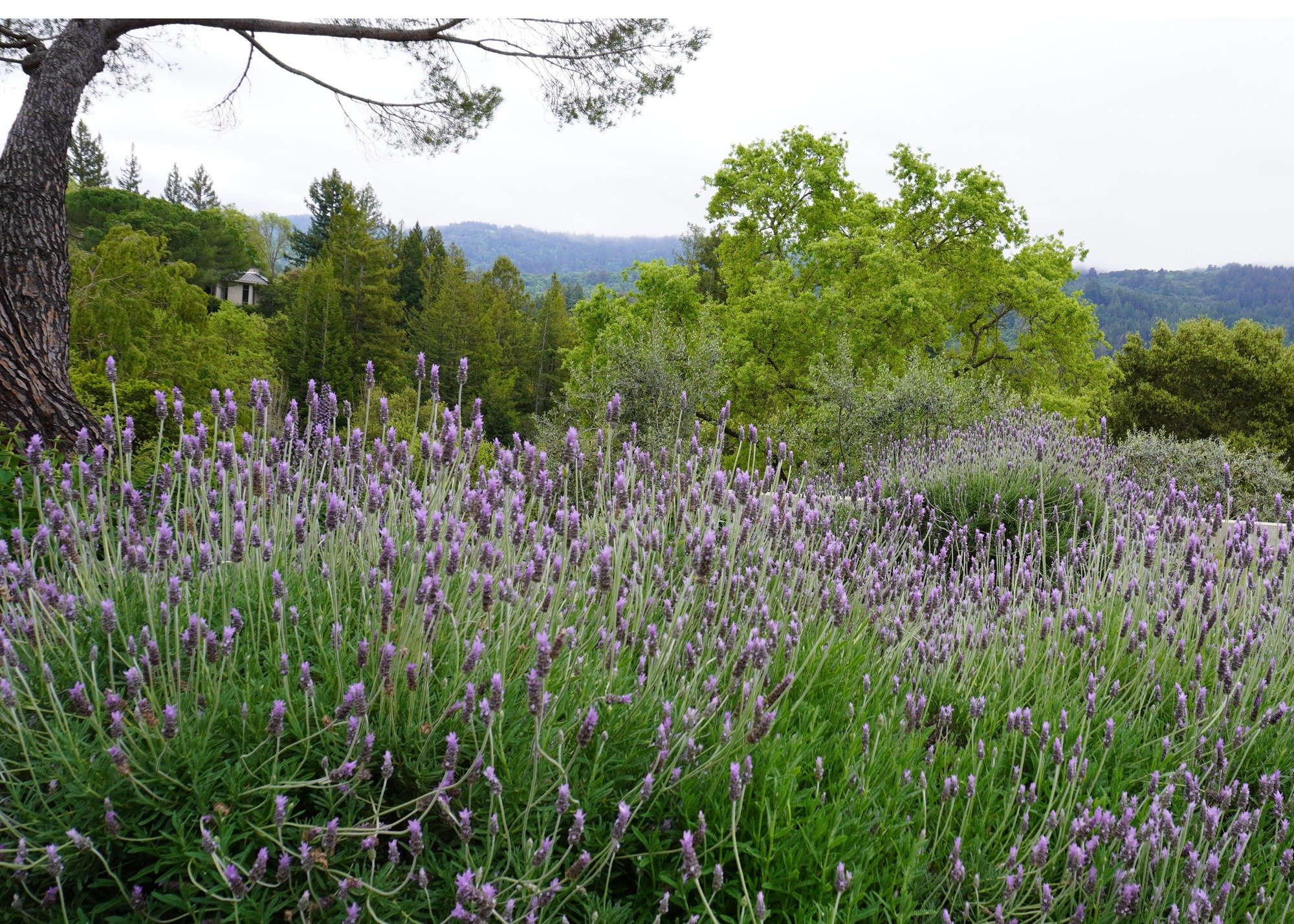
Lavender has been used here to enhance the natural beauty that surrounds the space.
When a property is surrounded by a beautiful vista, this has to be taken into consideration when choosing the landscaping ideas. Too showy a planting scheme and the focus will be on the immediate sightline of the garden and not what is beyond. In this project by Petrus Luxury Estate Landscaping, lavender was planted liberally, along with other plants in a gray-green palette to complement the surrounding beauty.
"One of the best features at this property is the surrounding views of the northern California landscape. Having this backdrop to a property required careful selection of plant material, so that it does not distract from these views, but instead enhances them," says Ward Dilmore, founder of Petrus Luxury Estate Landscaping. "With this perspective, Lavender, Olives, and ornamental grasses bring a gray-green tone that complements and highlights the surrounding native landscape.
"When looking out the windows of the home, one will notice that the Lavender and grasses border the spectacular views of the Santa Cruz Mountains. The ornamental grasses also complement the rolling hills and prairies of Portola Valley, creating a “tribute” to the surrounding landscape."

Ward Dilmore is an experienced Landscape Designer and Architect based in the California Bay area. He is also the Founder of Petrus, a renowned Luxury Estate Landscaping Company. Ward’s journey into landscaping began with a strong connection to nature and a sharp eye for detail developed over years of caring for private estates.
Why you should add lavender to your landscape?
Lavender offers multiple benefits (whichever variety is most suited to your conditions). As well as being versatile and visually-appealing in the landscape, lavender's fragrance is calming to the human nervous system and the plant is beneficial to the wider ecosystem.
"The use of Lavender is well documented and can be traced back over 2000 years, emerging in the Mediterranean, Middle East and India. But this humble plant is as relevant today as ever for a whole host of reasons," says Byron Thomas, head of horticulture, Petersham Nurseries. "From pollination and supporting vital bee communities with late summer nectar, to relieving anxiety and stress, lavender really is a wonder plant that no garden, or gardener for that matter, should be without."
Whether you opt for hardy English lavender or one of the tender varieties, provide the lavender with a sunny spot and well-draining soil, and it should reward you with fragrance, color, and texture in your garden.
"Success with lavender is based upon site, drainage, and winter conditions," says Matt Mattus. "Lavender dislikes cold, winter wet, and prefers a sunny aspect with excellent drainage, yet it still requires moisture, which in some places can be a hard balance to achieve well.
"As a Mediterranean plant, it loves heat, but not heat and humidity, which encourages fungal diseases, especially if plants are mulched in the garden along with daily irrigation. Avoid excess watering. More lavender dies in gardens that have drip lines than anywhere else."
Now, all you need to know is how to care for lavender plants to ensure your design scheme stands the test of time.
Jacky Parker is a freelance lifestyle journalist and writer, producing a wide range of features for magazines and digital platforms. She has written for Livingetc and its sister titles, Homes & Gardens and Country Homes & Interiors for more than 15 years, both as a freelance contributor and as Acting Digital Editor and Acting Style Content Editor, regularly reporting on the latest interiors, gardens and wellness inspiration, speaking to experts in their respective fields, and discovering the best tips.
Jacky has also written for other publications, including Sunday Times Style, The Telegraph, Architectural Digest, House Beautiful, ELLE Decoration, Red, Grand Designs and more.
